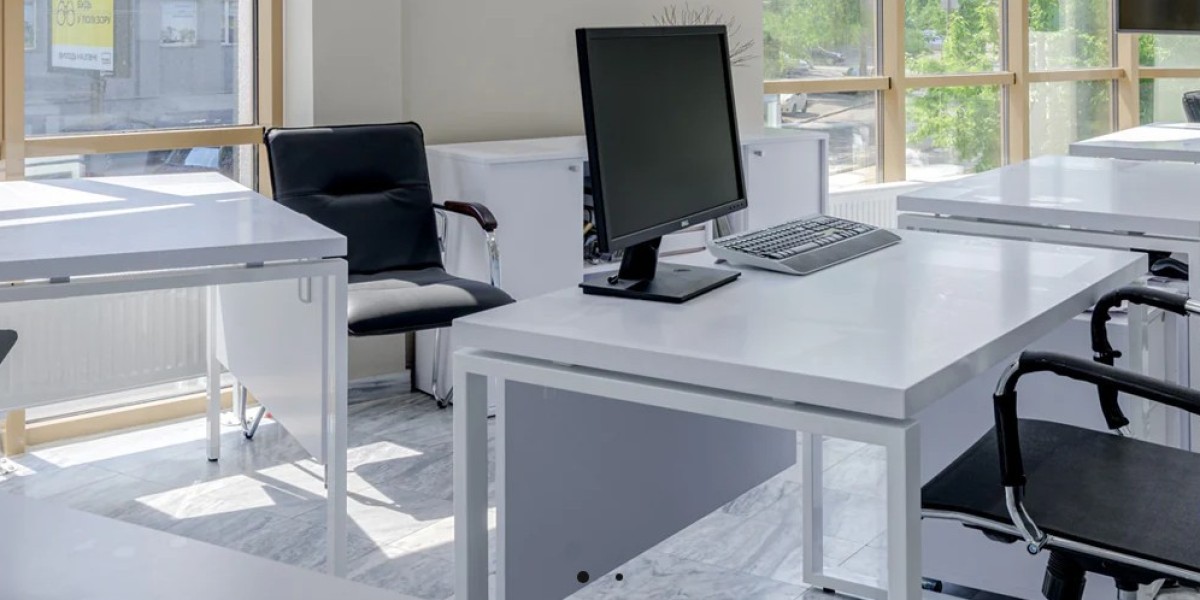Designing an open-plan workspace with the right office furniture can create a collaborative, flexible, and productive environment. Open-plan offices are designed to encourage communication and interaction among employees while providing the necessary functionality and comfort. Here’s how to choose the best office furniture for open-plan workspaces:
1. Versatile Desking Solutions
- Bench Desks: Use bench desks to accommodate multiple employees and create a streamlined look. These desks save space and encourage collaboration by allowing team members to sit together.
- Modular Workstations: Opt for modular desks that can be easily reconfigured to suit changing needs and team dynamics. They offer flexibility and adaptability in an open-plan setting.
- Standing Desks: Incorporate adjustable standing desks to promote health and wellness by allowing employees to alternate between sitting and standing.
2. Collaborative Furniture
- Meeting Tables: Include large meeting tables for team discussions and brainstorming sessions. Look for tables with built-in power outlets and data ports for convenience.
- Huddle Spaces: Create huddle spaces with comfortable seating and smaller tables for informal meetings and impromptu discussions.
- Soft Seating Areas: Use sofas, armchairs, and ottomans to create relaxed areas where employees can collaborate or take breaks.
3. Acoustic Solutions
- Acoustic Panels: Use acoustic panels to reduce noise and create a more focused work environment. These can be mounted on walls or used as dividers between workstations.
- Privacy Pods: Incorporate privacy pods or phone booths for confidential conversations and focused work, providing a quiet space in a bustling open office.
- Soundproof Partitions: Utilize soundproof partitions to divide spaces and minimize distractions while maintaining an open feel.
4. Storage Solutions
- Lockable Cabinets: Provide lockable storage cabinets to secure personal items and sensitive documents. This helps maintain a clean and organized workspace.
- Open Shelving: Use open shelving units to display items and keep frequently used materials accessible. They also help define different areas within the open space.
- Mobile Storage: Opt for mobile storage solutions, such as rolling carts and cabinets, to allow for easy rearrangement and flexibility.
5. Ergonomic Seating
- Adjustable Chairs: Provide ergonomic chairs with adjustable features, such as lumbar support, armrests, and seat height, to ensure employee comfort and productivity.
- Active Seating Options: Consider active seating options like balance balls or stools that encourage movement and promote better posture.
6. Technology Integration
- Integrated Power Solutions: Choose furniture with built-in power solutions, such as desks with USB ports and outlets, to keep devices charged and reduce cable clutter.
- Technology-Friendly Conference Tables: Opt for conference tables with integrated technology features, such as video conferencing capabilities and wireless charging.
7. Aesthetic Appeal
- Color and Design: Select furniture with colors and designs that reflect your company’s brand and culture. Use a consistent color scheme to create a cohesive look.
- Natural Materials: Incorporate natural materials like wood and metal to add warmth and texture to the office environment.
8. Flexibility and Adaptability
- Mobile Furniture: Use furniture on casters, such as mobile desks and chairs, to allow for easy reconfiguration of the workspace as needed.
- Folding and Nesting Tables: Choose folding or nesting tables that can be stored easily when not in use, providing flexibility for different activities and events.
9. Personalization Options
- Customizable Workstations: Allow employees to personalize their workstations with adjustable accessories like monitor arms, desk organizers, and lighting.
- Individual Lockers: Provide individual lockers for personal belongings to give employees a sense of ownership and security.
10. Green and Sustainable Choices
- Eco-Friendly Materials: Opt for furniture made from sustainable materials and finishes to support environmentally friendly practices.
- Biophilic Design: Incorporate biophilic elements, such as plants and natural light, to enhance well-being and create a more inviting workspace.
Conclusion
Choosing the best office furniture for open-plan workspaces involves creating a flexible, collaborative, and comfortable environment that meets the needs of your team. By selecting versatile desking solutions, ergonomic seating, and integrating technology, you can design a workspace that encourages productivity and communication while reflecting your company’s brand and culture.☺








